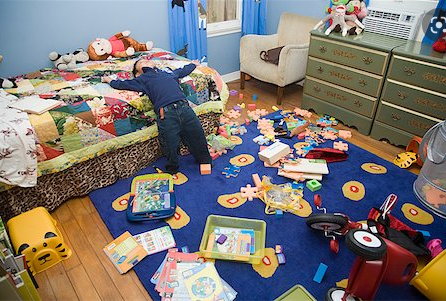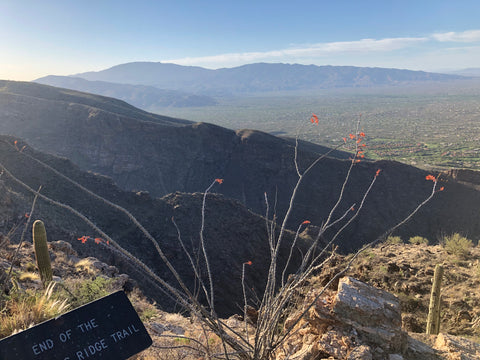
What’s All the Fuss About Handwriting?
One of the things that makes Page A Day Math stand out from other early-math programs is its prompts for handwriting practice through tracing repetition. I wanted to offer a program that helped children, not only with their math knowledge, but also with their math handwriting. It needed to be tactilely pleasing and perfect for small hands. I also wanted children to be able to visually see their progress. That’s why Page A Day Math isn’t an online program or made up of letter-sized worksheets, but rather a box of 10 small books.
Practicing numbers on paper improves children’s penmanship, but beyond that, is it really so important? So much is done online in the classroom, so why put such a strong focus on handwriting and legibility? I don’t have an answer for this—I have many answers for this.
Writing Uses More of the Brain
The act of putting pencil to paper and writing a number uses more of the brain than simply typing in an answer. The tactile nature of the books, especially since they are perfectly sized for small hands, make them more stimulating than a keyboard. The connections that the brain makes when hands are writing are stronger than when hands are typing.
Putting pencil to paper actually stimulates a portion of the brain called the Reticular Activating System (RAS). The RAS acts as a filter for information, directing you to what is most important to pay attention to. The stimulation of the RAS, through handwriting, triggers your brain to pay attention in a way using technology does not.

Other studies have shown the difference in brain activity when a child writes a word versus simply studying the word. The areas of the brain associated with learning experience more activity when children are writing.
While I value this research, I don’t think it’s very surprising. As parents and teachers we can see the differences between writing and online learning in our children’s behavior. Just by observing kids while they are using a computer and using a paper and pencil for similar tasks, there is clearly a contrast. Watch the movement of your child's eyes, how they are sitting, and the thinking that goes on when a child is holding a pencil and looking at their paper versus holding a mouse and looking at a screen. It’s really interesting.
Writing Lets You Slow Down
Compared to typing, writing is a slower process. This allows your brain time to think and concentrate on what you’re writing about. With more time to process, deeper connections can be made. Studies have shown that students learn better when they can actually process information, and that writing by hand allows them to process better.
Slowing down also gives kids a change to notice and correct their mistakes. On a computer or tablet, they are often not given the time or opportunity to correct problems in a way that allows them to think and process the mistake in their own time. Once you need to use an eraser, things slow down, and that’s a good thing. What do you think is going on inside your child's head when they are erasing? They are already thinking about the next step and how they can correct their mistake. They wouldn’t be able to slow down and do that if a screen had already moved them on to the next problem.
Writing Improves Your Writing
This one seems rather obvious, but it’s more important than you might think. When you practice writing numbers, just as when you practice writing letters, your penmanship improves. But in a technology-loving world, is this really important? Yes. Do you know that I have seen children get an answer incorrect, not because they didn’t know how to do the problem, but because they couldn’t read their own work! They couldn’t tell the difference between their 7s and 9s and 4s.
This matters a lot when solving math problems and it can cause a lot of frustration. It also leads to lower scores, lower confidence, lower self esteem, and a longer time needed to finish homework. Kids know when they have illegible handwriting. They hear about it from their teachers, parents, and friends. It hurts their egos. As kids advance and math becomes more difficult, working through a problem will involve writing more numbers on scratch paper. Some teachers require that students show their work. You can’t effectively show your work if your numbers aren’t legible.
Writing Helps You Remember More
Whether it’s because it’s a slower process, or because it activates more of the brain, writing helps you remember content more easily. When students take notes on a lecture by hand, they retain more of the information than those students who typed their notes. When we engage across multiple senses while we learn (like touch and sight), we are better able to recall the information.

Writing Helps You Perform Better on Tests
It makes sense that if writing something down helps you remember it better, you would perform better in a test of recall. But we actually perform better on a test or other type assignment when we are encouraged to write out solutions.
Math teacher William Hinkley compared his students’ success while using an online math homework program. Half of the students used it as they had been all year, while the other half watched a short video reminding them of the importance of using pencil and paper and were required to turn in their paper as part of their homework grade. The students using paper while completing their work outperformed their peers by about 13 points.
The Program for International Student Assessment has been testing students all over the world in math, reading, and science since 2000. The organization that administers the test compared results for students using computers to practice vs. pencil and paper. They found that an increase in computers being used in the classroom correlated with lower test scores.
This is so important for parents to understand. We have been using math software and apps for years now, but our scores on national tests are not improving. What does that mean for your child learning their foundational math skills on a computer?

Writing Helps You See Progress
One reason parents love the format of Page A Day Math is that children can go back and look at the books they have already completed. They can see how much they have improved in penmanship and math when they compare book five to book one. They can hold concrete evidence in their hands of everything they have learned in a way they can’t with online work or worksheets.
I developed Page A Day Math to help students learn their math facts as well as deliberately practice their number writing. Good penmanship in math isn’t just helpful to the teacher grading tests—it actually helps students process and learn their math lessons.
To try a sample math book from one of our math kits, click here.
Try our complimentary flashcards, click here.
About the Author and Creator of Page A Day Math
 Janice Marks
Janice Marks
Janice began her career in education to pursue teaching pre-algebra at BASIS Tucson North, a charter school currently ranked as the sixth-best STEM school in the country by Newsweek. There she found joy in teaching math, working with parents, and inspiring children to believe in themselves and thrive. This experience, along with helping her own children succeed in math, led her to develop the Page A Day Math system.





